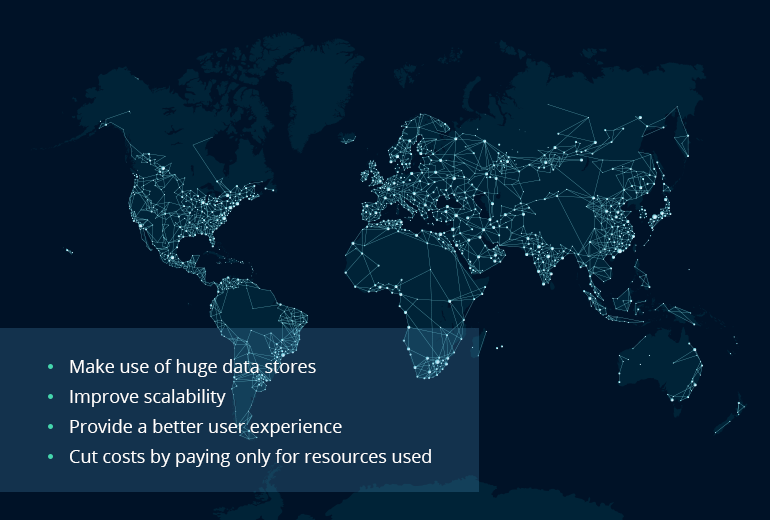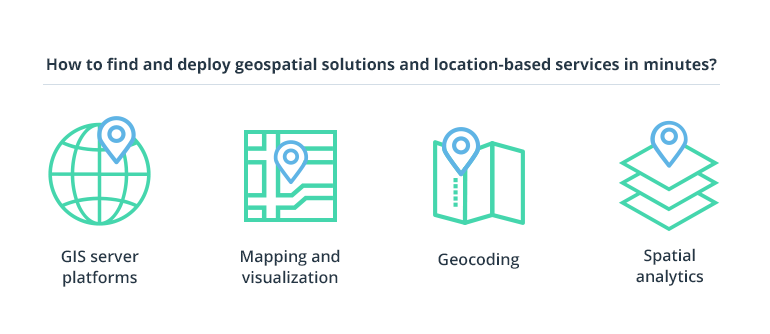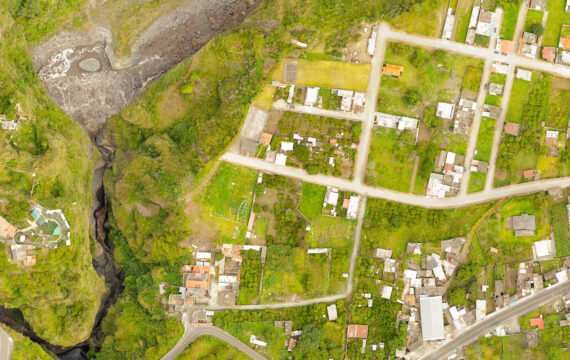Have you felt the focus shift to cloud computing? Users might not have felt it, but for businesses and developers, cloud computing is a game changer. Powerful architecture that’s secure and affordable is now available to organizations anytime and anywhere regardless of their size and industry. No wonder the geospatial field is speeding up its adoption of cloud solutions. If you haven’t moved your geographic information systems (GIS) to cloud computing yet, here’s some information that will help you make a decision to run GIS in the cloud.
Combining GIS and cloud
Geographic information systems (GIS) can and should be combined with the shared pool of networks, servers, apps, storage, and services that are available thanks to the cloud. You can run GIS in the cloud but access it in a web browser. Working together, the cloud and GIS software provide an advanced solution with broad capabilities for collecting, analyzing, and publishing geospatial data. Desktop-level mapping solutions on a web-based platform become more powerful, scalable, and closer to the audience who will use the geospatial information.
GIS cloud architecture

Source: Springer Link – Spatial Information Research
This may not sound too impressive, but let’s put it in perspective: all GIS tools, databases, images, etc. are stored and organized on the web. When you need more capacity, the cloud platform automatically increases it, making GIS in the cloud a more flexible option. You can access this storage anytime — from your work laptop, at home, while traveling — and share your work with customers and colleagues instantly. That’s the idea behind the GIS migration to cloud.
GIS cloud services

Source: Springer Link – Spatial Information Research
Web-based GIS platforms and databases are built on HTML5 standards, and they work everywhere. Legacy systems, either physical or online, are less reliable — and any server downtime costs a fortune. With a cloud-based development platform and GIS migration to cloud, you don’t use your own computing systems; all the GIS services reside on the cloud infrastructure. There’s no server to maintain because a third-party vendor (usually) takes care of it.
Migrating GIS to the cloud: Things to consider

Here are some reasons to consider moving GIS to the cloud:
- Make use of huge data stores
- Improve scalability
- Provide a better user experience
- Cut costs by paying only for resources used
Despite the weighty arguments for GIS data migration to cloud, many companies still hesitate. Their usual concerns are data protection, the reliability of cloud GIS systems and databases, loss of control, and lack of support. But most of these concerns are myths today. Modern cloud providers invest in an unprecedented level of security since they deal with a vast amount of data, users, and attack vectors. In fact, not many companies and startups can afford in-house security processes like those provided by reputable cloud providers. Also, cloud infrastructure complies with a variety of security and industry-specific standards.
As for reliability and support, third-party vendors usually take care of everything from downtime and backups to infrastructure. Modern cloud platforms ensure the lowest possible downtime, though downtime is still possible since any cloud depends on an internet connection.
Loss of control over your brand is another myth. Today’s services allow you to customize lots of parameters, from navigation menus to corporate colors and specific terminology. White-labeling for GIS cloud is possible as well.
If you decide on GIS migration to cloud, here’s your action plan:
- Analyze your existing infrastructure. Determine the issues with your current deployment and problems that may emerge in the future.
- Select the right cloud platform according to your needs and requirements. Examine the market of existing cloud architectures and see how they can fit your apps, infrastructure, and users. It’s better to look at several options, speak to GIS system providers, and compare offers.
- Start building a cloud space. This stage involves installing, testing, migrating apps, uploading data, training, etc.
Creating a solid strategy of GIS data migration to cloud will be seamless with a reliable partner by your side. If you lack in-house experts, Intellias can make your work with GIS cloud services easier and faster.
Cloud for GIS systems: AWS and Azure
The top GIS system providers, starting from the highest-rated ArcGIS, already offer their own cloud solutions for improved map creation, data management, and sharing of spatial information.
You can host your enterprise cloud based GIS either on Amazon Web Services (AWS) or Azure. The AWS GIS marketplace offers GIS server platforms, mapping and visualization tools, spatial analytics, and geocoding software.
Geographical information systems on AWS

Source: Geospatial World
Currently, AWS supports the following GIS server platforms:
- Esri
- Carahsoft
- HumanGeo
- Mapbox
- MapLarge
- Ball
Microsoft Azure allows you to deploy the ArcGIS Enterprise platform as well as the ArcGIS Server site and ArcGIS Desktop client on its virtual machines. Esri customers can also take advantage of the Rokmaps application, GIS cloud services that work on the ArcGIS platform. To deploy ArcGIS Enterprise on Microsoft Azure, you’ll need to use Cloud Builder.
GIS cloud computing is available via three service models:
- Infrastructure as a Service (storage processing, networks)
- Platform as a Service (application framework in addition to the cloud solution stack)
- Software as a Service (offerings from established GIS vendors)
You can deploy GIS in the cloud as a private, community, public, or hybrid cloud according to the NIST definition of cloud computing.
Benefits and outcomes of moving GIS to the cloud
Cloud-based GIS platforms are winning the market, and the migration to the cloud will continue. Businesses that already leverage the cloud for their geographic information systems see:
- lower costs, as there’s no need to invest in a server room and storage solutions; money can instead be spent on top-notch laptops, reliable network connections, and advanced GPS;
- the availability of services from any location and any device;
- savings on operational costs, as the service provider takes care of the cloud infrastructure;
- improved analytics, as the scalability of GIS in the cloud opens the door for big data analytics, from satellite data to live streams from IoT devices.
After discussing the advantages, we should also mention the possible disadvantages of cloud GIS. They include dependence on network connectivity, annual payments, and possible lack of control. But given the high efficiency that the cloud can bring to GIS services, these drawbacks seem minor.
The bottom line
Migrating GIS services to the cloud takes some time and effort, but it’s a necessary step to keep up with the competition. This action plan requires analyzing your current GIS infrastructure, selecting a cloud platform, and building cloud space.
If this action plan seems beyond your company’s capabilities, Intellias can help. We’ve developed cloud GIS solutions for automotive and FinTech clients, and we can share our migration experience with you. Feel free to contact our experts for more details on moving GIS to the cloud.





